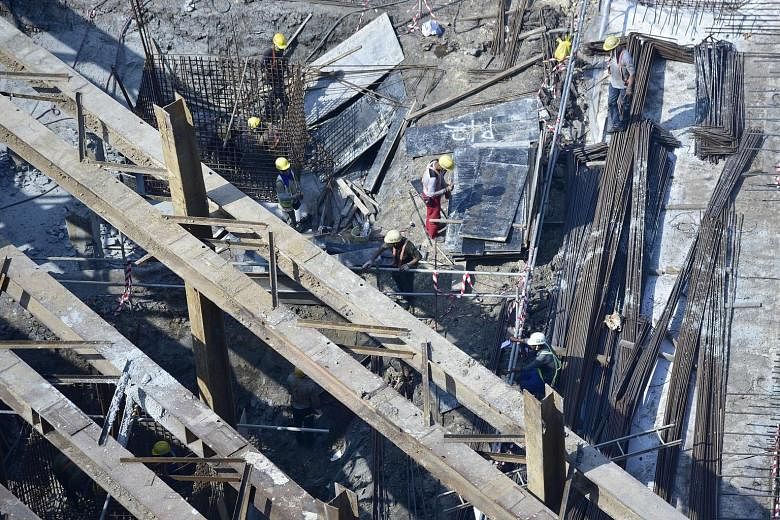The building time for public-sector projects, such as transport infrastructure and HDB flats, could be shortened as the Government is looking at making industry players collaborate from the beginning.
The industry - from architects and engineers to contractors and facility managers - now tends to work in silos, causing inefficiency and time wastage, said National Development Minister Lawrence Wong.
To boost construction productivity, the Government is looking into piloting a collaborative contracting model in its projects, similar to existing ones in the United States and Hong Kong, he said.
Speaking at the first joint conference by the Board of Architects and Association of Consulting Engineers at Marina Bay Sands yesterday, Mr Wong said the push towards a more collaborative approach was necessary as the sector here is "fragmented" despite the small market. This means it takes time for new best practices or technologies to filter through to the entire industry.
"There is also the risk of working in silos and not coordinating effectively among ourselves," he said.
If the building plans are not specified properly or if work needs to be aborted, it could lead to inefficiencies, duplication of effort and wastage, he added.
"We have studied what other countries do. It is very interesting because other countries are similarly grappling with this challenge and they are trying out different contracting models," Mr Wong said.
In the US, the different parties come together to conceptualise the project from Day One and seek to minimise errors, wastage and redesign problems, he added.
Hong Kong also uses an alliance contracting framework - known as the New Engineering Contract - for all its government projects tendered from 2015.
In Singapore, the Building and Construction Authority (BCA) is looking to do something similar by stipulating how important details and information are to be communicated between architects, engineers, contractors and facility managers, said Mr Neo Choon Keong, its deputy chief executive officer of industry development.
"Because we are the biggest procurer, BCA is working with government agencies to put in place contractual requirements to get parties to collaborate," he said at the sidelines of the conference.
This will also pave the way for developers, consultants and contractors to adopt digital building tools, such as Building Information Modelling (BIM), to facilitate collaboration, said Mr Neo.
The hope is for the private sector to follow suit. BCA already imposes the mandatory use of prefabricated methods, known as Prefabricated Prefinished Volumetric Construction (PPVC), at selected government land sale sites.
According to BCA's targets, 70 per cent of all large construction projects should be designed virtually and use such offsite construction methods by 2025, said Mr Neo.
"It is a stretch target, but it is something that we are working towards, and something that we believe will effect the transformation of this sector," he said.
The Government is also looking at how to place greater emphasis on quality assessments and productivity for tenders, and disqualify poor performing firms from taking part, said Mr Wong.
Several project consultants from small and medium-sized enterprises remained sceptical about the push for PPVC and BIM because of the projected higher costs.
Mr Mark Chin, 58, managing director of architecture consultancy Vivata, said: "A decade ago, there was also a push to adopt a digital system called BP Expert, which was meant to computerise building plans. But the market was not ready for it, and everyone went back to paper plans."


